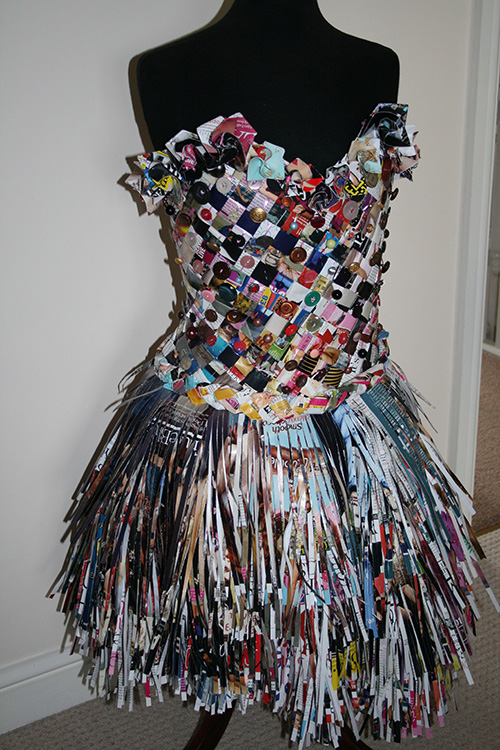
Introduction
Recycling has become a crucial part of our daily lives, with efforts to reduce waste and preserve the environment. One area where recycling is gaining popularity is in the fashion industry. The concept of a recycled outfit involves using materials that would otherwise be discarded to create stylish and unique clothing pieces. This article explores the growing trend of recycled outfits and how they contribute to a sustainable and eco-friendly fashion industry.

History of Recycled Fashion
The idea of recycling clothing is not new. In the past, people would often repurpose old garments or hand them down to others within their communities. However, with the rise of fast fashion and the throwaway culture, the concept of recycled fashion took on a new meaning. Designers and fashion enthusiasts began experimenting with unconventional materials, such as plastic bottles, newspapers, and even discarded fabrics, to create innovative and sustainable outfits.

Benefits of Recycled Outfits
There are several benefits to wearing a recycled outfit. Firstly, it helps reduce waste and minimizes the environmental impact of the fashion industry. By repurposing materials that would otherwise end up in landfills, recycled outfits contribute to a more sustainable future. Additionally, wearing a recycled outfit often means wearing a one-of-a-kind piece, making a fashion statement that is unique and original.

Types of Recycled Materials
The materials used in recycled outfits can vary greatly, depending on the creativity and resourcefulness of the designer. Some common examples include repurposed denim, reclaimed silk, recycled plastic, and upcycled fabrics. Each material brings its own unique texture and aesthetic to the outfit, making recycled fashion a truly diverse and exciting field.

The Process of Creating a Recycled Outfit
The process of creating a recycled outfit involves several steps. Firstly, the designer needs to identify the materials they wish to repurpose. This could involve sourcing discarded fabrics, old garments, or even unconventional items like bottle caps or can tabs. Once the materials are collected, they are carefully cleaned and prepared for use.

Designing a Recycled Outfit
Designing a recycled outfit requires creativity and innovation. The designer must envision how different materials can be combined to create a cohesive and stylish look. This process often involves cutting, sewing, and sometimes even dyeing or embellishing the recycled materials to achieve the desired effect. The end result is a unique and sustainable outfit that showcases the designer's talent and commitment to the environment.

Challenges and Limitations
While recycled outfits offer numerous advantages, there are also challenges and limitations to consider. One of the main challenges is sourcing a sufficient quantity of recycled materials. Depending on the desired design and size of the outfit, finding enough suitable materials can be a daunting task. Additionally, the durability and longevity of recycled outfits may vary, as some materials may not withstand regular wear and tear as well as traditional fabrics.

The Rise of Sustainable Fashion
The rise of recycled outfits is part of a broader movement towards sustainable fashion. Consumers are becoming more conscious of the environmental and social impact of their clothing choices. As a result, many fashion brands are incorporating recycled materials into their collections and adopting sustainable production practices. This shift towards sustainability is reshaping the industry and encouraging a more responsible approach to fashion.

Impact on the Fashion Industry
The growing popularity of recycled outfits is having a significant impact on the fashion industry. Designers are increasingly incorporating sustainable practices into their work, and consumers are embracing the uniqueness and eco-friendliness of recycled fashion. This shift is encouraging a more circular economy within the industry, where materials are reused and repurposed, reducing the overall environmental footprint.

Ways to Support Recycled Outfits
There are several ways individuals can support the growth of recycled outfits and sustainable fashion. Firstly, consider purchasing recycled clothing from brands that prioritize sustainability. By investing in these pieces, you contribute to the demand for recycled fashion and help encourage the industry to continue innovating. Additionally, you can explore DIY projects and repurpose your own clothing or donate unwanted garments to organizations that promote recycling.

Conclusion
Recycled outfits are not only fashionable but also contribute to a more sustainable and eco-friendly fashion industry. By repurposing materials and embracing creativity, designers and fashion enthusiasts are making a positive impact on the environment. The growing popularity of recycled fashion is reshaping the industry and encouraging a more responsible approach to clothing. Embrace the trend of recycled outfits and join the movement towards a greener future.